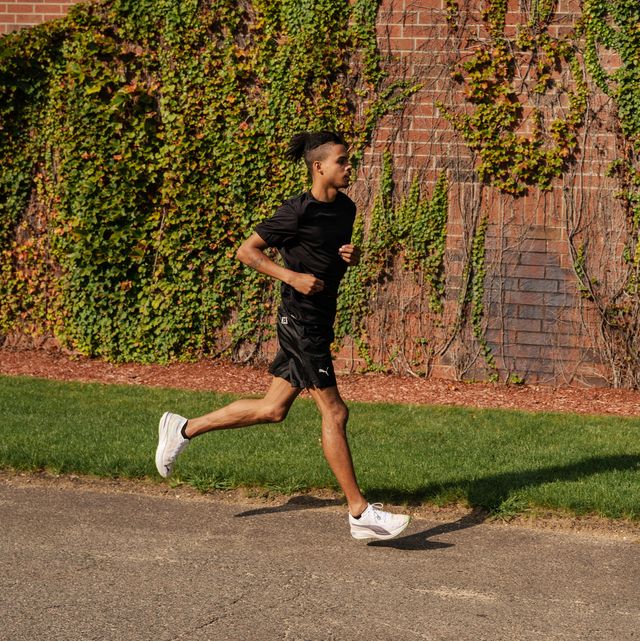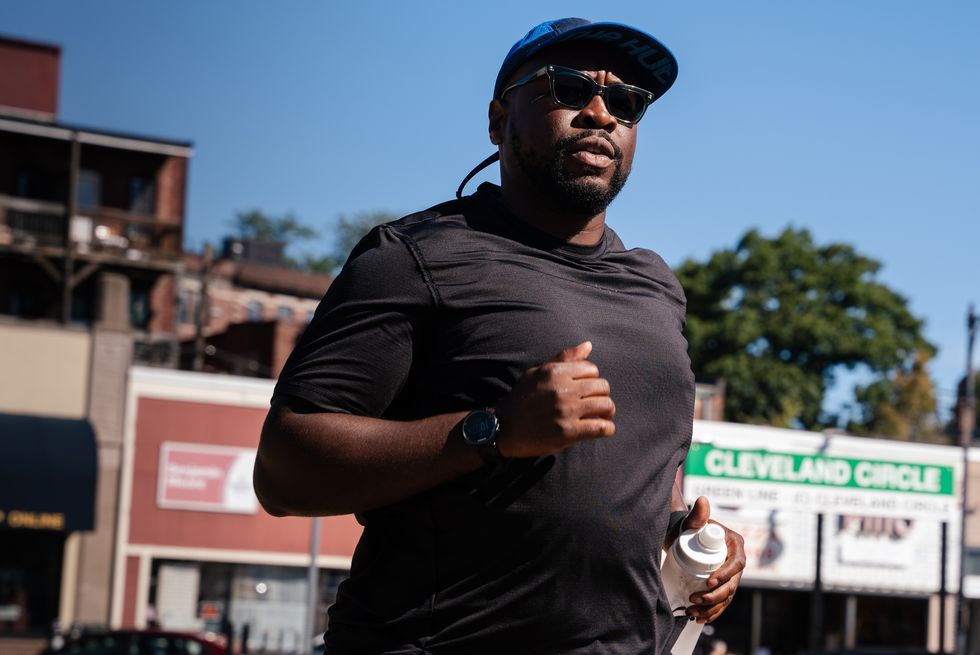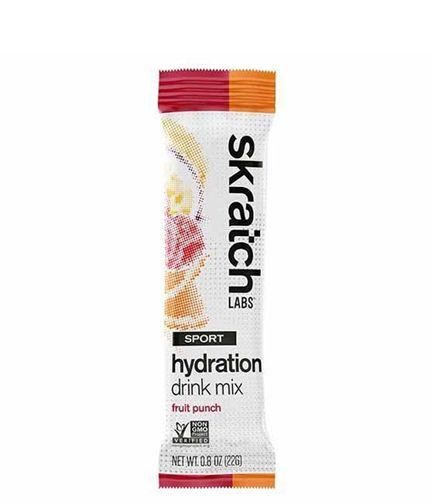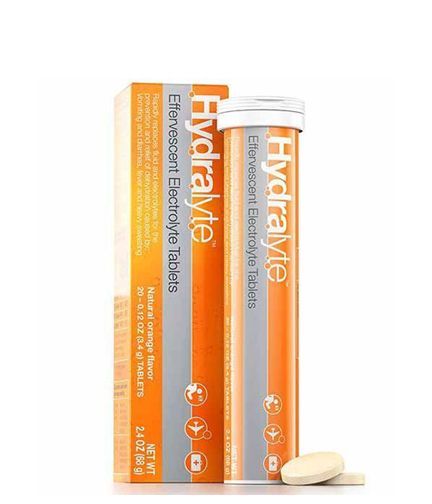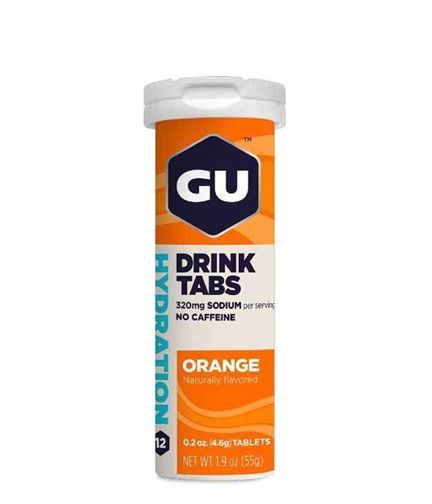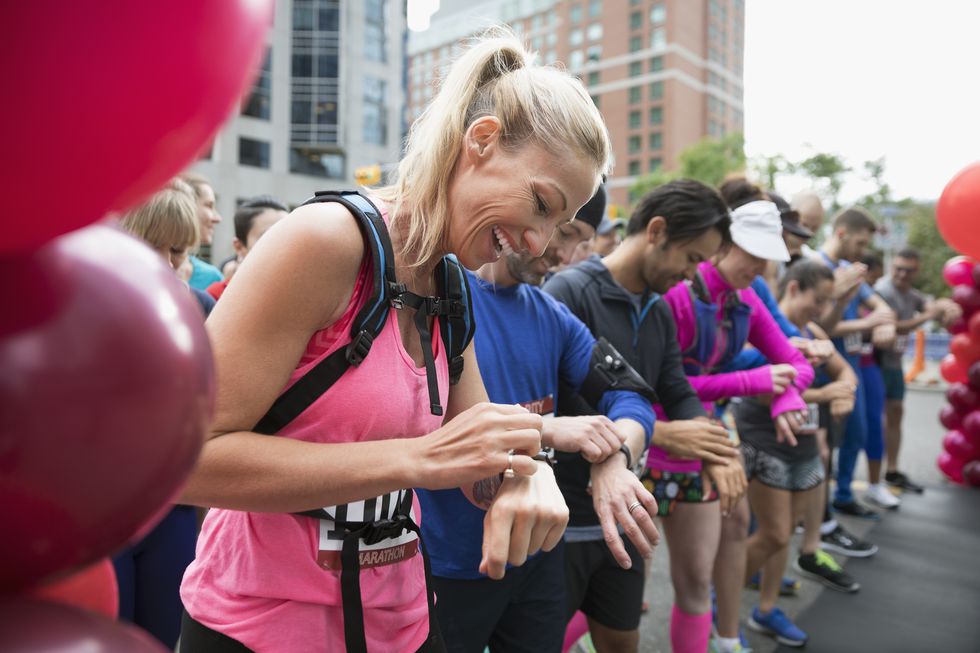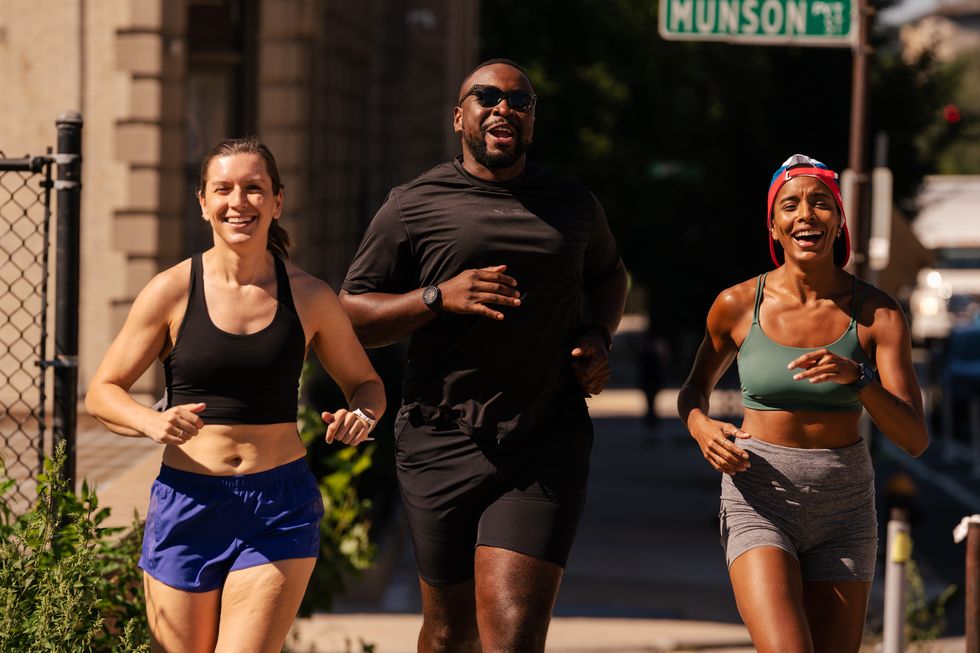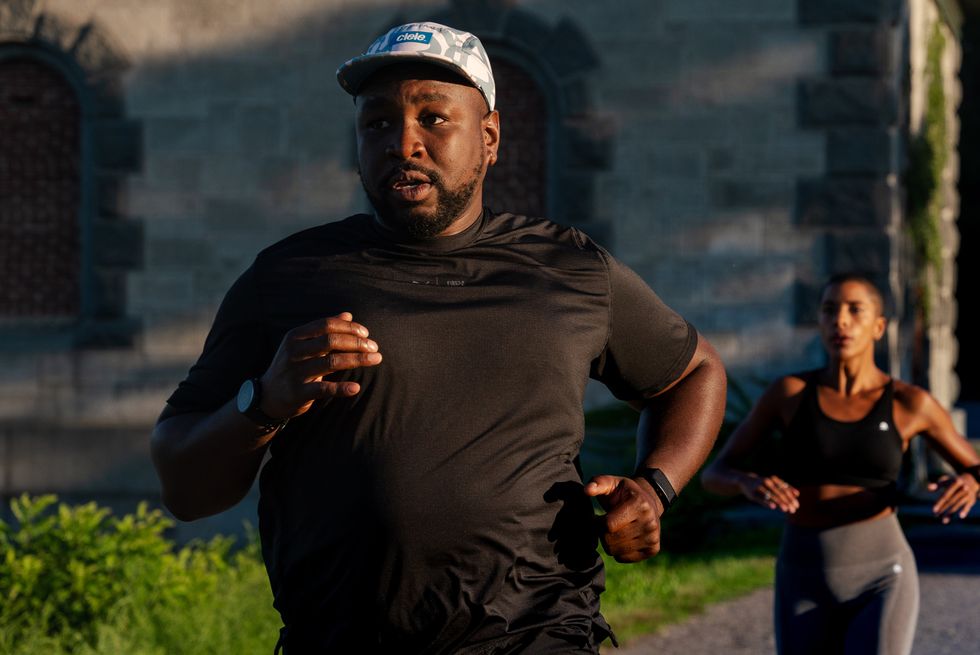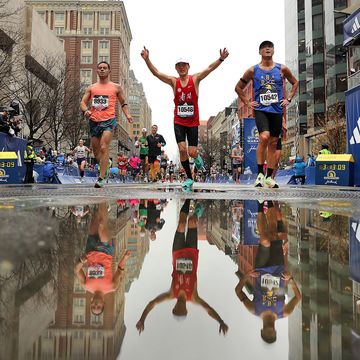With most in-person marathons back in action after the COVID-19-mandated cancellations of 2020, many runners are finally getting a chance to mark “run a marathon” off their bucket lists.
However, even though vaccines are widely available and many runners are vaccinated against COVID-19, it’s still important to take certain precautions when traveling and participating in these marathons. Especially because the Delta variant, which data has found to be more infectious, is currently the predominant variant in the United States, according to the CDC.
But if you are following all of the recommendations and guidelines, we’re here to advise marathon runners what to do a month out, a week from the start, and even the day of. Shoe tips? Check. Hydration strategy? It’s here. Taper advice? Got it. And for those of you not running 26.2 anytime soon, our humble (yet informed) opinion is that you will be soon.
So keep these tips where you can find them—they aren’t just essential; they’re timeless.
Look down
Select the shoes—and the socks—you’ll wear in the marathon. The shoes should be relatively lightweight but provide good support, and the socks should be the type you wear in other races.
If the shoes aren’t your regular training shoes, wear them on at least one 10-mile run at marathon pace. This test run will determine whether you’re likely to develop blisters or get sore feet before it’s too late. If the shoes bother you on this run, get yourself another pair.
Do a half marathon
“About a month out is a good time to test your fitness,” says four-time Boston Marathon and New York City Marathon champ Bill Rodgers. “Also, a good race can provide a powerful mental lift, and it will give you a little rest period in the few days before and after as you taper and recover from it.”
Aim to run the half marathon slightly faster than your marathon goal pace. If you can’t find a tune-up race, recruit friends to accompany you on a long run, with the last several miles faster than marathon pace.
Add speed to your longest long run
“Four weeks out is when I do my longest run,” says 2:13 marathoner Keith Dowling. “I’ll run up to 26 miles, with this twist: I do my usual easy long-run pace for most of it, but with eight miles left, I’ll work down to six-minute pace and drop the pace every two miles to finish at five-minute pace.”
Translated into mortal terms: With eight miles to go, begin running one minute per mile slower than your marathon goal pace. Then speed up every two miles to run the last couple of miles at goal pace or slightly faster. This run will teach you how to up your effort as you become tired. Combine this with the half marathon mentioned above, doing one with four weeks to go, and the other with three weeks to go. Your local race calendar will probably dictate the order in which you’ll run them. But if you have a choice, do the long run four weeks out (for more recovery time) and the half marathon three weeks before your race.
Mimic the course
If at all possible, start doing runs on the same topography as the marathon. For example, go up and down lots of hills if you’re running New York City, and get used to several hours of pancake flatness if you’re running a course like Chicago. (A flat course might seem less challenging, but its lack of variation means you’ll be using the same muscles the whole race. You need to prepare for this.)
If you live in a flat area and are preparing for a hilly marathon, do several runs on a treadmill, and alter the incline throughout. If you don’t have access to a treadmill, run on stairways or stadium steps. (Hey, drastic times call for drastic measures.)
Drink on the run
“Practice during your remaining long and semilong runs with the sports drink and energy gels you intend to refuel with during the race,” advises Suzanne Girard Eberle, M.S., R.D., a former elite runner and author of Endurance Sports Nutrition.
“Serious-minded racers and those with finicky stomachs should be using the sports drink that will be available on the race course. And remember that sports drinks do triple duty when compared with water by providing fluid, carbohydrates, and electrolytes, the most important being sodium.”
Find out what fluids your marathon will have on the course and how often your marathon will have aid stations, and practice drinking at that rate. If you don’t run with fluids, place bottles along your training route.
Dress properly
Once you’ve picked your marathon outfit, wear it on a long run to make sure it doesn’t irritate your skin.
“I normally race in my marathon clothes before the race to feel if they’re comfortable,” says Sara Wells, the 2003 U.S. National Marathon Champion.
“Please don’t run the marathon in a cotton T-shirt, even if it’s for a wonderful charity,” implores Rodgers. “You’ll run so much easier in real running clothes, such as those made of Coolmax or nylon, than in a suffocating T-shirt.”
Don’t get greedy
Stick to your plan when training for a marathon; it isn’t like cramming for a test. That is, doing more miles than you’re used to in the last few weeks will hurt—not help—your race.
“Even if you’re feeling great, don’t up the ante and increase your training,” cautions Rodgers.
“This is the time when many runners have been at it for two months or more and are becoming used to a certain level of training. Draw strength from the hard work you’ve put in.” Wells advises, “Have confidence in what you’ve been doing. From here on out, you’re just maintaining your fitness.” And get plenty of sleep.
Taper
Do no more than 40 percent of your peak weekly mileage, with most of that coming early in the week. Except for your dress rehearsal run (see below), keep your runs easy.
“You should feel like you’re storing up energy, both physically and mentally” says Rodgers.
If you’ve done speedwork as part of your buildup, follow an easy run later in the week with some quick 100-meter pickups to remind yourself of how fast and fit you are. On the day before the race, stick with your pre-long-run routine–a day off if that’s what you usually do, a two- or three-mile jog if you’re a daily runner.
Run a dress rehearsal
Four or five days before the marathon, do a two- or three-mile marathon-pace run in your marathon outfit and shoes. Picture yourself on the course running strong and relaxed. Besides boosting your confidence, this run will provide one last little bit of conditioning and will help you lock in to race pace on marathon day.
Run like a clock
If possible, run at the same time of day as the start of your marathon. This way, your body’s rhythms—including the all-important bathroom routine—will be in sync with marathon needs come race day. The more times you can do this, the better, but shoot for at least the last three days before the race.
Set several goals
Your primary goal is the one you’ve been working toward during your buildup, whether it’s a personal best, qualifying for Boston, or breaking five hours. Your secondary goal should keep you motivated at the 22-mile mark on a bad day: finishing in the top 50 percent, slowing only 10 minutes over the second half, or just reaching the darn finish line.
“Review your training and set one goal for a good race day, and another as a backup plan in case it’s hot or windy or you’re just not feeling great,” Rodgers recommends. “So many things can go wrong in a marathon that you need that secondary goal to stay motivated if things aren’t perfect, which they seldom are.”
See success
On several nights before going to bed, or first thing in the morning, visualize yourself crossing the finish line as the clock shows a new personal best. Before the 2004 Olympic Marathon Trials, where Wells placed seventh, she replayed positive mental images before falling asleep at night.
“I knew the course we would be running, and I’d see myself out on it running well,” she says. “There’s a hill in the 25th mile, and I’d say to myself, ‘Okay, get up that hill, and then run strong to the finish.’”
Chill out
Reduce the outside stresses in your life as much as possible the last week. Try to have work projects under control, politely decline invitations to late nights out, and so on. Most of all, stay off your feet–save museum tours and shopping sprees for after the marathon, and don’t spend four hours the day before the marathon checking out the latest energy gel flavors at the race expo.
“Before the Trials,” says Wells, “I went to my brother’s house and just basically hung out.”
Eat carbohydrates
During the last three days before your marathon, concentrate on eating carbohydrate-rich foods, such as pasta, potatoes, bread, fruit and fruit juice, and sports drinks. It’s the carbs, after all, not fat or protein, that will fuel you on race day. Suzanne Girard Eberle, MS, RD, CSSD, says what’s important is increasing the percentage of your calories that come from carbs, not simply eating more of everything. (Bummer, we know.)
“Since you’ll be tapering and expending fewer calories,” Girard Eberle says, “you don’t have to consume a great deal more food than usual. Rather, make sure your food choices are carbohydrate-rich—for example, spaghetti with red sauce, instead of Alfredo sauce, or a bagel versus a croissant.”
Go with what you know
Even if three-time Olympian Deena Kastor appears on your front porch dispensing advice, don’t try anything radical the week of your marathon or on race day. Stick to your plan and what you’ve practiced during your buildup.
For example, if you haven’t done regular speedwork, now isn’t the time to start just because someone told you it will keep your legs “fresh” while you’re tapering. At this point, also ignore any “can’t-miss” diet tricks from friends.
“So much of those last few days is mental,” says Wells. “Feel comfortable with what you’re doing rather than trying something new and worrying how it will affect you.”
Eat breakfast
Two to three hours before the start, “eat a carbohydrate-rich breakfast, even if that means getting up at an ungodly hour and going back to bed,” says Girard Eberle. The reason: As you slept, your brain was active and using the glycogen (stored carbohydrate) from your liver. Breakfast restocks those stores, so you’ll be less likely to run out of fuel. Aim for a few hundred calories, such as a bagel and banana or toast and a sports bar. “At the minimum,” says Girard Eberle, “consume a sports recovery drink, or a bland, well-tolerated liquid food such as Ensure or Boost.”
Warm up
But just a little. Even the best marathoners in the world do only a little jogging beforehand, because they want to preserve their glycogen stores and keep their core body temperature down.
If you’re a faster runner with a goal pace significantly quicker than your training pace, do no more than 10 minutes of light jogging, finishing 15 minutes before the start. Precede and follow your jog with stretching. If you’ll be running the marathon at about your training pace, skip the jog. Walk around a bit in the half hour before the start, and stretch (see below).
Collect yourself
An hour before the start, find a quiet place, and spend five minutes reviewing your race plan and motivation.
“Remind yourself of why you’re there,” says Rodgers. “Take confidence in the months of effort behind you. An exciting and satisfying day is just ahead of you!”
If you’re running the race with a training partner, make it a group session: Share your goals with each other for mutual reinforcement.
Line up loose
Fifteen minutes before the start, begin some gentle stretching. Concentrate on the muscles of the back side of your body—your calves, hamstrings, glutes, and lower back. Remember, your goal is to start the race comfortably, not to audition for a yoga video, so go easy. Try to keep stretching after you’ve been herded to the start area. Jog in place as well, to keep your heart rate slightly elevated.
Start slow
Run the first two to three miles 10 to 15 seconds per mile slower than goal pace. This preserves precious glycogen stores for later in the race so you can finish strong. When Catherine Ndereba set a world record at the 2001 Chicago Marathon, she eased into things by running the first 5K at just over 5:40-per-mile pace, and went on to average just under 5:20 per mile for the race.
Relax
“Because the pace feels so easy, I get antsy in the early miles,” says Heather Hanscom, a 2:31 marathoner. “But I make myself stick to my game plan and don’t get carried away. I know that to run well later, I need to feel really relaxed the first third.”
Hanscom checks her early splits to make sure, no matter how good she feels, that she’s starting conservatively.
“In the first 10 miles, I look around at the surroundings, the fans along the way, and enjoy the changing scenery,” adds Wells.
Think laps, not miles
“Instead of obsessing about each of the 26 miles, I look at each three-mile segment as a lap,” says Dowling. “That makes it more manageable mentally. To concentrate on every mile would be like paying attention to the odometer throughout a five-hour drive.”
Sing
“To take my mind off the big task ahead, I sing songs in my head,” says Jean Arthur, a 3:21 marathoner and former president of the Montgomery County Road Runners Club in Maryland. “I pick a song and try to sing it from start to finish. Usually I don’t know all the words, so I sing it and I try to figure out what the artist is saying.”
Arthur also becomes an on-the-run mathematician. “I calculate exactly what percentage of the race I have done,” she says. “That’s good for me in two ways: First, it occupies my mind, and second, I love the point at which I can tell myself I’ve done more than 50 percent, because at that point, I figure I can’t quit.”
Drink early and often
Take sports drink at the first aid station and every one after. Taking in carbohydrates and fluid early will help postpone or prevent serious dehydration or carbohydrate depletion later, so you’ll be a lot more likely to maintain your pace.
“During prolonged exercise, our thirst mechanism doesn’t keep up with our actual needs,” says Girard Eberle. “Then, as you become dehydrated, less oxygen and fuel is delivered to working muscles, and you run slower.”
Push hard late in the race
No matter how much you’re raring to go, keep things under control until well past the halfway mark. Then you can start racing.
“If you feel relatively good at 18 miles, that’s the time to get aggressive,” says Dowling. “You’re down to eight miles to go, so if you’re still fresh, you can approach it mentally like a shorter race.”
For example, focus on a runner who is 100 yards ahead of you, pass her, then move on to your next victim. Wells, who took the lead in her National Championship victory at the 25th mile, says, “It’s an incredible boost to pass people in the last six miles. Sure, you’re hurting, but think how bad they feel!”
Talk to yourself
At around mile 23, says Arthur, “my head grasps the fact that I am actually going to finish. Yes, I’m really tired, but I tell myself, ‘I will finish somehow, some way.’ I say this to myself over and over and it helps me recognize that the pain is just temporary.” And, as we all know, pride is forever.

Scott is a veteran running, fitness, and health journalist who has held senior editorial positions at Runner’s World and Running Times. Much of his writing translates sport science research and elite best practices into practical guidance for everyday athletes. He is the author or coauthor of several running books, including Running Is My Therapy, Advanced Marathoning, and Meb for Mortals. Scott has also written about running for Slate, The Atlantic, the Washington Post, and other members of the sedentary media. His lifetime running odometer is past 110,000 miles, but he’s as much in love as ever.
